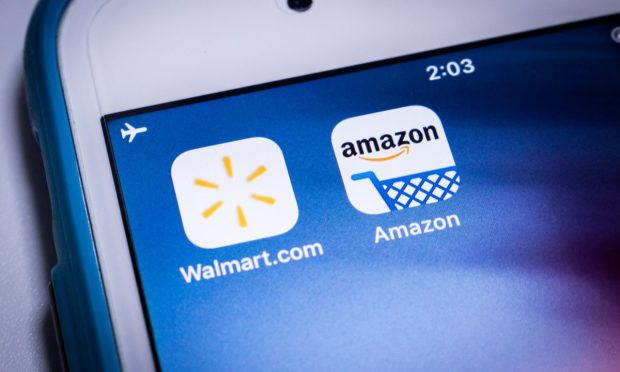AMZN vs WMT Weekly: An Unforgettable Month for All the Wrong Reasons

With shares of Amazon and Walmart both slumping over 20% in the past 30 days in the wake of their respective earnings reports, the so-called “merry, merry month of May” has been no walk in the park for the top two retail titans, as well as most of their peers.
Starting with Amazon’s post-Q1 report slide which commenced on the final days of April, followed by Walmart’s inflation-crunched bottom-line results three weeks later, the trailing 30-days have been bruisingly unforgettable for both these companies, the retail patch and the broader markets and economy.
As the body of anecdotes mounts, and reports of customer spending shifts and trade-down shopping habit changes to things like store-brand bacon rise, a waiting game of sorts is emerging that involves guessing how long consumers and retailers alike can hang-on and scrape by before succumbing these historic pricing pressures.
While there is little doubt that Walmart and Amazon will emerge intact on the other side of this latest phase of economic upheaval, the same cannot be said for their small rivals on Main Street or the 60% of U.S. households that are currently living paycheck to paycheck, while tapping their dwindling savings and available credit in order to make ends meet.
For the latter, it is truly a contest of determination and the ability of individuals to find a way to survive until the storm passes so to speak. Until it does, and by some estimates inflation could be uncomfortably high for the rest of the year, attributes like value, convenience, loyalty rewards and other personalized retail responses will be at a premium and reap rewards for the companies that are most innovative at creating them.
Selling Value
Even in good times consumers love getting a good deal and most large, national retailers got that way by being skilled practitioners of the art of creating value and shaping consumer perception and response.
Within this current context, the past week has seen both companies actively tweaking their portfolios of both customer-facing services and customer-supporting operations, all with the underlying objective of bringing value to customers or enabling the retailers to offer it.
Case in point, Walmart’s twin announcements this week that it was deepening its robotic warehouse automation efforts to all 42 of its regional distribution centers as well as the expansion of its drone delivery program to 34 stores in six states.
“The need for accuracy and speed in the supply chain has never been more visible,” David Guggina, SVP of Innovation and Automation at Walmart U.S. said in a blog post announcing the retailer’s expanded AI-driven, robotic warehouse automation pact with Symbotic. “We’re confident that now is the time to move even faster,” Guggina added.
The very next day, Walmart doubled-down on its convenience play with the literal launch of its 3-minute, $3.99 aerial delivery service of tens of thousands of everyday items that weigh less than 10 pounds. At a time when gasoline prices are $5 a gallon, the retailer said, the ability to not have to make another run to the store for a last-minute item is well-timed, noting that demand for boxes of Hamburger Helper were proving popular in the pilot phase of its drone service.
To keep costs down, Walmart also plans to offer aerial services to other local businesses and industries, such as realtors and insurers.
Amazon’s Mall Rescue
In a similar vein, Amazon said this week that it was expanding its own pilot delivery program whereby its Flex drivers would pick-up packages from local mall-based retailers and bring them to nearby customers.
The program is starting in a few select locations, including in Las Vegas, Virginia and Texas.
Amazon spokeswoman Kate Kudrna said in a statement that a few “existing Amazon sellers” were participating in the program, noting that the company had already been delivering from third-party stores for years. “This is another way we are able to connect Amazon sellers with customers via convenient delivery options.”
At the same time, Amazon also moved this week to connect with digitally native apparel shoppers that still want an in-store, try-on experience via the opening of its first physical “Amazon Style” clothing store in Los Angeles.
“Amazon Style is designed to help customers discover looks they’ll love through a personalized and convenient shopping experience using advanced technology and world-class operations,” the company’s blog post said, without specifying plans to scale the concept.
